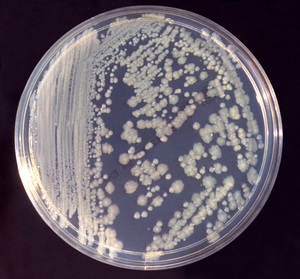Bacterial antibiotic resistance genes have been discovered in soil  frozen for over 30,000 years, Canadian scientists have shown.
frozen for over 30,000 years, Canadian scientists have shown.
Working at a site close to Dawson City in Yukon, Vanessa D'Costa and her colleagues drilled 6 metres into the permafrost to recover core samples from soils aged by carbon dating to concide with a time when mammoths and bison roamed the area. Using sensitive genetic techniques the team were able to recover from the samples DNA sequences of trees, animals and microorganisms.
Focusing on the bacteria, they were able to identify the genetic signatures of a range of microbial species, including genes known to confer resistance to several classes of modern day antibiotics. The VanX gene that enables bugs to evade vancomycin was one, the TetM gene, which provides tetracycline resistance also turned up, as did the beta-lactamase gene that breaks down penicillins.
The scientists ruled out contamination of their core samples by contemporary organisms by first spraying their drilling equipment with a strain of E. coli into which a glowing-green jellyfish gene had been inserted. By looking at the levels of this gene amongst the DNA they recovered from the cores they could gauge the level of contamination, which was extremely low.
To confirm that the ancient anti-antibiotic genes were functional, the VanX gene recovered from the cores was inserted into a strain of laboratory-grown E. coli bacteria, which made the gene product. This was further tested to confirm that it behaves identically to the VanX resistance genes found in hospitals today.
So, far from being a new phenomenon that has emerged only in the last eighty years over which antibiotics have become mainstream, antibiotic resistance is in fact much older.
As the researchers say in their paper in the journal Nature, "This work firmly establishes that antibiotic resistance genes predate our use of antibiotics and offers the first direct evidence that antibiotic resistance is an ancient, naturally-occurring phenomenon widespread in the environment."
This is because, after all, the antibiotics we use in hospitals today are largely "borrowed" from other microbes, which normally make these chemicals to protect themselves. Naturally, other bugs have evolved defense measures in the form of resistance genes.
"[this] predicts that new antibiotics will select for pre-existing resistance determinants that have been circulating within the microbial pangenome for millenia. The reality must be a guiding principle in our stewardship of existing and new antibiotics."










Comments
Add a comment